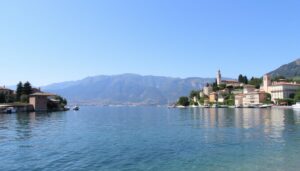Our comprehensive guide offers expert insights on opis, tytul, and slowa kluczoe, empowering you to navigate this subject with confidence and achieve your goals in Italy. As a leading provider of data-driven solutions, we are committed to equipping you with the knowledge and tools necessary to thrive in the dynamic opis landscape.
Key Takeaways
- Gain a comprehensive understanding of the opis industry in Italy.
- Discover strategies to navigate the tytul market and achieve your business objectives.
- Leverage our expertise to make informed decisions and stay ahead of the competition.
- Explore the latest trends and developments shaping the slowa kluczoe sector.
- Unlock the full potential of your opis initiatives with our data-driven insights.
Introduction to OPIS
At OPIS, we pride ourselves on being a data-driven and quality-focused clinical research organisation (CRO). We collaborate extensively with numerous international Sponsors, supporting them on a diverse range of multi-country interventional and non-interventional trials. Our teams possess a wealth of experience in navigating a wide spectrum of therapeutic areas, from new-generation drugs to advanced therapeutic procedures and biologic treatment options.
OPIS: A Data-Driven Clinical CRO
As a data-driven CRO, we leverage cutting-edge technologies and robust operational expertise to deliver exceptional results for our clients. Our medical and scientific knowledge, combined with a deep understanding of the latest industry developments, have earned us established partnerships with leading pharmaceutical, biotechnology and medical device companies worldwide.
Expertise Spanning Numerous Therapeutic Areas
At OPIS, our teams are well-versed in managing clinical trials across a diverse range of therapeutic areas. From oncology and cardiology to neurology and rare diseases, our expertise allows us to provide tailored solutions that meet the unique needs of each project and client. By staying at the forefront of medical advancements, we ensure our Sponsors benefit from our comprehensive capabilities and unwavering commitment to quality.
OPIS: Energy Pricing Solutions Provider
At OPIS, we are dedicated to delivering the trusted energy pricing, news, data and analysis that businesses across the globe rely on to navigate the dynamic fuel supply chain. Our comprehensive solutions provide real-time, around-the-clock insights, empowering our clients to make informed decisions and stay ahead of market trends.
Real-Time Global Energy Data and Analytics
Our robust suite of real-time data and analytical tools offers unparalleled visibility into the entire energy ecosystem. From upstream crude oil and refined product prices to downstream retail fuel pricing, we equip our partners with the intelligence they need to optimise their operations and gain a competitive edge.
Featured Resource Hub: Earth Month
In April, OPIS proudly commemorated Earth Day by curating a special collection of content focused on the latest developments and initiatives driving sustainability in the energy and environmental sectors. This featured resource hub provided our clients with in-depth insights and thought-leadership to support their efforts towards a more eco-friendly future.
tytul: An Overview of OPIS Retail Reports
At OPIS, we are committed to providing our clients with comprehensive insights into the ever-evolving retail fuel market. Our flagship publication, the OPIS Retail Year in Review and 2024 Profit Outlook Report, offers a 360-degree analysis of the retail landscape, examining the performance and market share of over 100 retail fuel brands. This in-depth report not only reveals the dominant players in 2023 but also sheds light on the brands and markets that faced the greatest challenges.
OPIS Retail Year in Review and 2024 Profit Outlook Report
As a trusted leader in the retail fuel industry, we understand the importance of data-driven decision making. That’s why our OPIS Retail Year in Review and 2024 Profit Outlook Report includes exclusive insights into retail margins, historical price changes, volumes, and market share data. This invaluable resource empowers our clients to make informed strategic decisions, navigate the ever-changing retail fuel landscape, and identify opportunities to enhance their brand performance and increase their market share.
Spotlight Analysis: California’s Gasoline Market
To gain a comprehensive understanding of the factors driving recent retail gasoline price spikes and ongoing volatility in the state, our experts at OPIS have conducted a thorough examination of the unique structure and regulations governing California’s
California gasoline
market.
Examining Unique Factors Impacting Pricing
Our newly published market analysis delves into the intricate web of fundamentals and state-specific regulations that are shaping the pricing landscape for California gasoline. This in-depth spotlight explores key factors such as the state’s stringent fuel formulation requirements, tight supply-demand dynamics, and the impact of geopolitical events on the global energy market.
By dissecting the nuances of California’s highly regulated fuel market, we aim to provide stakeholders with invaluable insights that can inform their decision-making and strategic planning. The analysis examines how these pricing factors contribute to the state’s gasoline prices consistently exceeding the national average, often by a significant margin.
Through this comprehensive market analysis, we empower our clients and industry partners to navigate the complex landscape of California’s California gasoline market with greater confidence and foresight. By understanding the underlying drivers of pricing volatility, stakeholders can develop more effective strategies to mitigate risks and capitalise on emerging opportunities.
The Ancient City of Opis
The ancient city of Opis, situated in Mesopotamia, has long captivated the interest of historians and archaeologists alike. Located near the Tigris River, not far from modern-day Baghdad, Opis holds significant insights into the rich cultural and political tapestry of the region.
Historical Background and Location
Recent geographical surveys of ancient Mesopotamia tentatively identify Opis with the mound called Tall al-Mujailāt, approximately 20 miles southeast of the modern city of Baghdad. This strategic location, on the east side of the Tigris River near the Diyala River, underscores the importance of Opis as a key urban centre in the ancient Near East.
Akkadian and Greek References
Textual evidence from Akkadian and Greek sources provides valuable insights into the history and significance of Opis. These ancient records indicate that the city was an integral part of the political and economic landscape of the region, serving as a hub of activity and influence.
Proposed Sites for Ancient Opis
While the exact location of ancient Opis has been the subject of ongoing debate, scholars have proposed several potential archaeological sites that may hold the remnants of this renowned city. The mound of Tall al-Mujailāt, situated in close proximity to the Tigris and Diyala rivers, remains a prime candidate for further exploration and excavation, promising to unveil new chapters in the rich history of ancient Opis, Mesopotamia, and the archaeological sites that dot the landscape.
Opis in the Neo-Babylonian Era
During the Neo-Babylonian period, the ancient city of Opis witnessed significant developments that solidified its strategic importance. The Neo-Babylonians, under the rule of King Nebuchadnezzar II, undertook ambitious infrastructure projects that transformed the region surrounding Opis.
The Royal Canal and Fortifications
One of the major achievements of the Neo-Babylonians was the construction of the „royal canal“ that connected the Euphrates and Tigris rivers, with Opis situated near its terminus. This extensive waterway facilitated trade, transportation, and military movements, further enhancing Opis’s role as a hub in the region.
Recognising the need for robust defences, Nebuchadnezzar II also built a long fortified wall stretching between the Euphrates and Tigris, with the line beginning at Sippar and extending eastward beyond the Tigris, ultimately reaching the vicinity of Opis. This defensive system was designed to safeguard the Neo-Babylonian kingdom against potential Median invasions, underscoring the strategic importance of Opis and its surrounding area.
The combination of the royal canal and the fortified wall demonstrated the Neo-Babylonians‘ commitment to strengthening Opis’s infrastructure and securing its position as a critical node in their regional power structure. These monumental undertakings highlight the city’s prominence during the Neo-Babylonian era.
Persian Conquest of Opis
In October 539 BC, the troops of the Babylonian king Nabonidus defended Opis against the Persians commanded by Cyrus the Great. The Babylonians were defeated and the native population revolted against its government. Without further fighting, Cyrus captured Babylon. Opis was located near the Persian Royal Road, which connected the former Elamite capital Susa to the Assyrian heartland around Erbil and, further to the west, the Lydian capital Sardis.
The conquest of Opis by Cyrus the Great marked a significant turning point in the history of the region. As the Persians expanded their influence, Opis found itself at the heart of the shifting power dynamics that would shape the centuries to come. This strategic location and its proximity to key trading routes made Opis a coveted prize, its fate intertwined with the fortunes of the great empires that rose and fell in ancient Mesopotamia.
The Persian conquest of Opis and the subsequent capture of Babylon by Cyrus the Great heralded the decline of the Babylonian Empire and the ascendance of the mighty Persian Empire. This pivotal moment would reverberate through the region, setting the stage for the Macedonian and Hellenistic eras that followed.
Macedonian Rule and Alexander the Great
The Macedonian king Alexander the Great made a significant impact on the ancient city of Opis. In September 331 BC, Alexander the Great decisively defeated Darius III of Persia at the Battle of Gaugamela, and shortly after, he likely took possession of Opis around the same time as Babylon.
The Battle of Gaugamela
The Macedonian conquest of the Persian Empire reached a critical juncture at the Battle of Gaugamela, where Alexander the Great led his forces to a decisive victory over the armies of Darius III. This triumph paved the way for Alexander’s subsequent control over the strategic city of Opis.
The Mutiny at Opis
A few years later, Alexander faced a significant challenge when his European troops mutinied at Opis (autumn 324 BC) after he had been forced to return from his lengthy campaign in India by a mutiny at the Hyphasis (now Beas) River. This mutiny at Opis demonstrated the growing tensions between Alexander’s Macedonian and Persian subjects.
Unity Oath and Mass Marriage at Opis
In an attempt to foster lasting harmony between his Macedonian and Persian subjects, Alexander the Great took an oath of unity before 9,000 Persian and Greek troops at Opis. Additionally, he had married Stateira, the daughter of Darius, and celebrated a mass marriage of his senior officers to Persian and other Eastern noblewomen at Susa just before arriving at Opis.
Hellenistic and Parthian Eras
The ancient city of Opis witnessed a significant shift in its fortunes during the Hellenistic and Parthian periods. As the Seleucid Empire emerged from the legacy of Alexander the Great, its founder Seleukos I Nikator built his Mesopotamian capital, Seleukeia, mere miles southwest of Opis. This rapid development of the Hellenistic city soon overshadowed older Mesopotamian centres like Babylon, Sippar, and Opis itself.
Seleukeia and the Decline of Opis
The Seleucid Empire’s capital of Seleukeia swiftly eclipsed Opis, becoming a prominent hub of Hellenistic culture and commerce in the region. As the Seleucid influence expanded, the older Mesopotamian settlements, including Opis, gradually waned in significance and prominence.
The Rise of Ktesiphon
In the 2nd century BC, the Parthian Empire conquered the eastern provinces of the Seleucid Empire, including Seleukeia and Opis. Both cities were, in their turn, largely overshadowed by the emergence of a new Parthian (and subsequently Persian) capital, Ktesiphon, situated strategically between Seleukeia and Opis. The rise of Ktesiphon further diminished the importance of these once-prominent Mesopotamian urban centres.
Archaeological Findings and Kudurrus
Our recent archaeological excavations in the region have uncovered a wealth of Mesopotamian artefacts that provide valuable insights into the history and significance of the ancient city of Opis. One particular finding of note is a Kudurru dated to the 13th year of the Second Dynasty of Isin ruler Marduk-nadin-ahhe (c. 1095–1078 BC), which was discovered at Tulūl al-Mujaili`. This important stone monument was recorded at „the city Opis“, shedding light on the political and administrative structures of the time.
In addition, a Kudurru from the reign of Adad-apla-iddina (c. 1064–1043) was excavated at Assur and is also dated at Opis, further corroborating the city’s prominence during the Mesopotamian period. These kudurrus, or boundary stones, were used to record land grants and property delineations, offering valuable insights into the archaeological excavations and Mesopotamian artefacts associated with the ancient city.
Interestingly, the land in question recorded on one of the kudurrus was part of the city of Dur-Sharrkin, also known as the „Fortress of Sargon“, though the exact location of this ancient settlement remains unknown. These findings underscore the rich and complex history of the region, with Opis playing a significant role in the political and economic landscape of Mesopotamia during this period.
Conclusion
This comprehensive guide has provided in-depth insights into the history and significance of the ancient city of Opis, as well as the modern-day OPIS organisation and its various offerings. From the city’s strategic location and role in regional power struggles to OPIS’s expertise in data-driven energy solutions and clinical research, this article has explored the multifaceted aspects of this subject matter. We hope the information presented has been informative and helpful in empowering you to navigate this topic with confidence, particularly in the context of Italy.
Throughout this guide, we have delved into the key summary and key takeaways surrounding Opis, its historical relevance, and the modern-day OPIS organisation. By examining the ancient city’s strategic position, its role in the power dynamics of the region, and the achievements of OPIS in the fields of energy pricing and clinical research, we have provided you with a comprehensive understanding of this multifaceted topic.
As we conclude this journey, we encourage you to reflect on the insights gained and consider how this knowledge can be applied to your own endeavours, particularly in the Italian context. The rich history of Opis and the innovative solutions offered by OPIS serve as inspirations for navigating complex challenges and achieving your goals with confidence and expertise.












